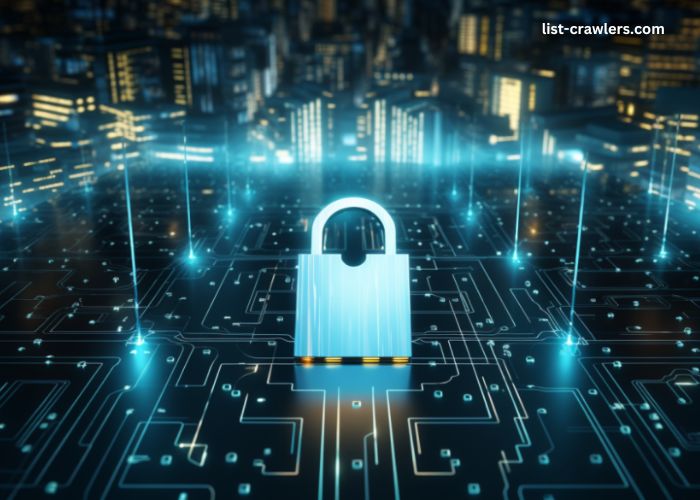Cybersecurity in Today’s Digital Landscape
In today’s fast-paced digital era, ensuring the safety of a company’s data and infrastructure is paramount. Cyber threats have evolved rapidly, becoming more sophisticated and frequent. Such disruptions can cause severe financial, reputational, and regulatory repercussions. Cybercriminals continuously develop innovative methods to breach security, targeting entities ranging from individual consumers to large multinational corporations. Comprehensive solutions blending technologies, processes, and policies designed to protect organizational assets from threats lie at the core of resilient cybersecurity strategies. These strategies must be dynamic, adaptable to new threats, and capable of defending against known and unknown vulnerabilities, thus ensuring sustained business continuity.
Among these critical solutions is the role of IAM solutions. Identity and Access Management (IAM) solutions are foundational in ensuring that access to organizational resources is based on contextually intelligent policies rather than arbitrary permissions. As gatekeepers, IAM solutions safeguard sensitive information by ensuring that only verified individuals can access sensitive assets. This approach builds a formidable defense against unauthorized intrusions and potential data breaches. IAM systems significantly mitigate unauthorized access and insider threat risks by managing and regulating user access rights, promoting a more secure and efficiently managed IT environment.
Why Identity and Access Management (IAM) is Key
Identity and Access Management is an essential framework that oversees digital identities and regulates their access to information in a network. This role has never been more imperative, especially as organizations transition to digital and cloud-based services. IAM provides a structured backbone for security protocols, ensuring roles, policies, and technologies work harmoniously to secure data effectively and efficiently. By adopting IAM policies, organizations can prevent data breaches and streamline operations by responsibly delegating access while maintaining compliance within dynamic regulatory landscapes.
Beyond simple user authentication, IAM encompasses an array of systems, including single sign-on, multi-factor authentication, and seamless cloud platform integration. These systems facilitate identity federation, amassing various identity repositories, thus simplifying the user experience while bolstering security. By effectively implementing IAM, organizations can monitor and manage identity lifecycles, access provisioning, and entitlements, ensuring users access the precise information they need without unnecessary hindrances. It enables organizations to operate flexibly, providing swift and secure resource access irrespective of location or device, enhancing overall operational efficiency and security.
Principles of Designing Strong IAM Policies
- Principle of Least Privilege: This essential principle mandates that users must receive only the minimal access or privileges required to perform their job duties. Restricting access based on necessity significantly reduces the chances of internal misuse and limits potential damage from external attacks. This principle ensures that sensitive data remains accessible only to those who genuinely need it, mitigating accidental or intentional misuse.
- Multi-Factor Authentication: A vital component for verifying user identity, multi-factor authentication requires users to present multiple verification forms before gaining access to crucial systems. It includes passwords, biometric verification, or tokens, adding layers of security that protect against compromised credentials. As hackers become more sophisticated, relying solely on passwords is increasingly inadequate, making MFA an essential defense against unauthorized access attempts.
- Regular Audits: Continuous assessment and audits are vital for effective IAM implementation. Organizations need to regularly assess and confirm policies to guarantee their alignment with business goals and regulatory obligations. These audits ascertain access rights, identify anomalies, and provide opportunities to update and refine access controls. Regular audits help recognize potential vulnerabilities or unauthorized access attempts, ensuring that IAM systems remain resilient and effective.
How Adaptive Authentication Enhances Security
Adaptive authentication signifies a pivotal evolution in security paradigms by evaluating contextual and behavioral factors to gauge the risk level associated with login attempts. Factors such as the user’s geographic location, device type, and access timing play crucial roles. Systems can dynamically adjust authentication requirements based on perceived risk by embedding machine learning algorithms to evaluate these variables in real time, enhancing security and user experience. This approach allows organizations to tailor security measures to match specific threat levels, creating a nuanced and effective defense against unauthorized access attempts.
Adaptive systems boost security without jeopardizing convenience by offering a multi-layered approach to authentication. For example, suppose an employee typically logs in from one location but suddenly tries to access the system from a different country. In that case, the adaptive authentication system might prompt additional verification steps. Adaptive authentication strategies strengthen defenses against potential breaches while aligning with modern users’ expectations for seamless yet secure access. By analyzing user behavior patterns and adjusting security measures, adaptive authentication significantly enhances overall security by reducing the risks posed by tailgating and other standard attack methodologies.
Real-World Examples of Successful Cybersecurity Implementations
Companies have effectively adopted cybersecurity measures and strengthened their safeguards against possible threats. These sectors deal with stringent regulatory requirements and manage highly sensitive data, necessitating robust IAM frameworks as integral components of their security strategies. Financial institutions, for example, utilize IAM to maintain compliance with standards such as PCI-DSS while safeguarding customer data from breaches. Similarly, healthcare organizations employ IAM to secure patient data whilst adhering to HIPAA regulations, ensuring data integrity and accessibility.
These real-world implementations effectively illustrate the efficacy and necessity of IAM practices. They offer valuable insights into navigating challenges through intelligent policy design, demonstrating that effective cybersecurity faces technical challenges and strategic organizational considerations. By examining how these successful implementations address common cybersecurity challenges, other organizations can gain actionable insights to strengthen their security postures and improve their IAM protocols, enhancing their overall resilience against cyber threats.
Future Trends in Cybersecurity You Should Know
Cybersecurity is constantly evolving, adapting to the rapidly changing threat landscape. As technological advances occur, new trends are reshaping how organizations approach cybersecurity. For example, incorporating AI into security measures facilitates proactive threat identification abilities, providing notable benefits in recognizing and addressing possible threats before they arise. AI-driven systems rapidly analyze massive data volumes, extracting critical insights that traditional methods might miss, thus supporting more proactive security measures.
Blockchain technology is another frontier expected to transform security protocols, particularly regarding data integrity and authentication processes. With its decentralized and impenetrable nature, blockchain presents a secure model for transactions and data exchanges, reducing vulnerabilities associated with traditional centralized systems. These technological advancements are ushering in a new era of cybersecurity strategies, focusing on decentralized, intelligent, and autonomous systems. These emerging trends emphasize the importance of staying ahead of the curve, ensuring organizations remain agile and robust against ever-evolving cyber threats.
Conclusion: Strengthening Cybersecurity for a Resilient Future
Maintaining a resilient cybersecurity defense is an ongoing challenge that demands continuous innovation, vigilance, and adaptability. As cyber threats evolve, so must organizations’ strategies to protect themselves. By prioritizing IAM solutions and adopting emerging technologies like adaptive authentication, businesses can lay the groundwork for adaptive, proactive security postures that anticipate and respond effectively to changing threats. As technology advances, organizations must embrace flexible security strategies that evolve alongside the digital landscape, ensuring their infrastructure is safeguarded against potential threats now and in the future, thereby securing their digital heritage and future.







